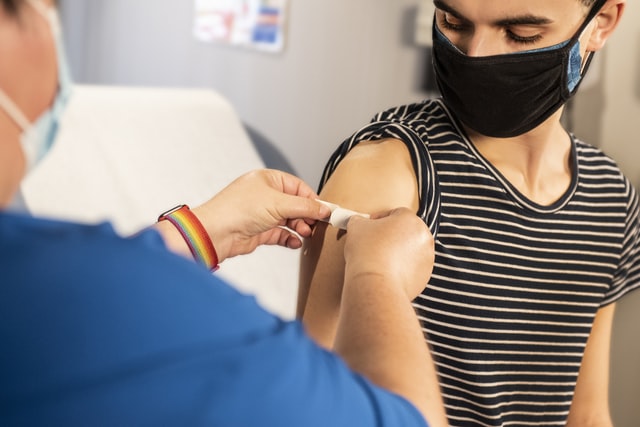This post follows ‘A history of cervical screening in England Part I’ written by guest author Scarlett Dargan. Scarlett read History at Churchill College, Cambridge. She is now studying for a master’s in journalism at City, University of London, and working as a freelance journalist.
Entering the computer age
By the mid-1980s, mass media focused on administrative issues within the screening programme. The magazine Pulse ran a front-page feature, headlined “Too many under-35s are having smears”, giving a platform to calls for “an efficient nationwide computer system, introduced to ensure the right women are called for screening.”
Exasperated by the difficulties of a national paper-based system, some regions such as Avon opted out and made local arrangements. This was an administrative triumph, and by the mid-1980s the Ministry of Health was advocating the devolution and computerisation of the recall system.
The imposition of an automated service was challenging. A statement from the Coordinating Committee on Cervical Screening highlighted that whilst the Government was recommending local computerised schemes, “As yet no guidelines have been issued to suggest how this might be achieved, other than a directive from the Minister of Health instructing District Health Authorities to fund Family Practitioner Committees (FPC) to computerise their female age-sex registers and make this data available.”
Overcoming the bureaucratic challenges
 Delays to computerisation began drawing public attention. One letter to the Department of Health dated 28 November 1985 saw the BBC request an interview with the Minister of Health about the screening programme. The broadcaster “want[ed] to look at how the computerisation of records at FPC level is already helping and how soon it may be before a computerised call/recall system can be in operation in all areas of the country.”
Delays to computerisation began drawing public attention. One letter to the Department of Health dated 28 November 1985 saw the BBC request an interview with the Minister of Health about the screening programme. The broadcaster “want[ed] to look at how the computerisation of records at FPC level is already helping and how soon it may be before a computerised call/recall system can be in operation in all areas of the country.”
A health circular of 17 December 1987 finally concreted the computerisation of the call and recall system. The document stated that “All District Health Authorities should have arranged with corresponding FPC to implement computerised call and recall systems no later than 31 March 1988. These must cover all women aged 20 to 64 inclusive, with recall for women aged 65 and over who have not had two consecutive negative smears in the last ten years. Women must be recalled for screening at least once every five years.”
Within five months, every single district was running a computerised call and recall system. The computerisation of the Family Health Service Authority data represented an enormous effort, computerising more than 35 million records with an investment of £310 million. England was the first country within the European Community to have a comprehensive screening service based on computerised call and recall. [Source: National Archives – Cervical Screening Key Facts circular, 1991]
This was coupled with informational leaflets, encouraging women to take up smear testing when offered it. As early as 1969, professionals on the Standing Sub-Committee on Cancer were expressing concerns to the government that uptake amongst women was low.
Medical professionals urged not only that:
“A) Women must be made aware of the existence of the test, and that it applies to them as individuals”; but also:
“B) Women must be educated in the purpose and method of the test so that those who request it know exactly what they can expect and are fully aware of the implications of what they are doing.”
Local newspapers, television and leaflets were identified as vital ways of providing information to a national audience. But the Sub-Committee understood that to be effective, there needed to be “different pamphlets devised for different social groups.”

Recent advances
By 1990, Health Minister Virginia Bottomley could promote that the UK was leading the European Community in cervical screening. Computerised call and recall meant that women were uniformly being invited for testing, reducing the risk of human error.
Similarly, a system of GP payments meant renewed zeal for making sure women were offered and attended testing. The initial payments system saw GPs paid one sum if they got at least fifty percent coverage, and a higher sum if they got eighty percent coverage of women. Financial incentivisation saw coverage soar, with many places achieving at least 80% coverage.
One of the most dramatic upturns in testing uptake came from a storyline in Coronation Street. Shortly after Easter 2001, Alma Halliwell was diagnosed with cervical cancer, with viewers told she had missed previous cervical smears. An article in the British Medical Journal assessing the impact of the storyline found a sharp increase in the number of smears taken in the first week of the Alma storyline, which only tailed off in mid-August, 6 weeks after Alma’s death. The storyline was not developed with health professionals, and some complained it involved inaccuracies in how the screening programme operates, but it emphasised how television could infiltrate cross-sectional social groups and improve screening uptake. When Sinead Osbourne was diagnosed with cervical cancer in Coronation Street in 2018, writers collaborated with medical professionals and the charity Jo’s Trust to ensure the coverage was medically accurate and sensitively done.
In 2008, the UK’s HPV vaccination programme was introduced, offering vaccines to girls aged 12-13 with a ‘catch-up’ programme offered to girls up to 18-years-old. Virtually all cervical cancers are caused

by HPV, and the Gardasil HPV vaccine used in the NHS programme protects against 9 types of HPV: 6, 11, 16, 18, 31, 33, 45, 52 and 58. Between them, types 16 and 18 cause more than 80% of cervical cancers in the UK, with types 31, 33, 45, 52 and 58 causing an additional 15%.
Since July 2018, the HPV programme has been extended to boys, because of the risk HPV infection can cause in contracting other types of head, neck, anal, and genital cancers. In an article in the Lancet in November 2021, it was calculated that the HPV vaccine cut cervical cancer rates in England by 87%.
Whilst Coronavirus has presented challenges to the cervical screening programme, coverage is bouncing back to pre-pandemic levels. Newer, more sensitive screening which tests for HPV was rolled out across the country in 2019 aiming to catch infection at an ever earlier stage before it potentially develops into cancer. Professor Peter Johnson, the national clinical director for cancer, says the goal is that “cervical cancer can be eliminated altogether by the NHS in England.”

The outlook now
From rocky beginnings, the English cervical screening programme, complemented by scientific advances, means we can now think of a day, relatively closely, where cervical cancer is a disease of the past, and when Lord Leatherhead’s promise of the programme bringing “peace to millions of women” will have been fully accomplished.
The views expressed are those of the author. Posting of the blog does not signify that the Cancer Prevention Group endorse those views or opinions.

